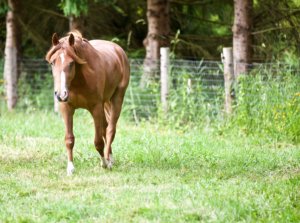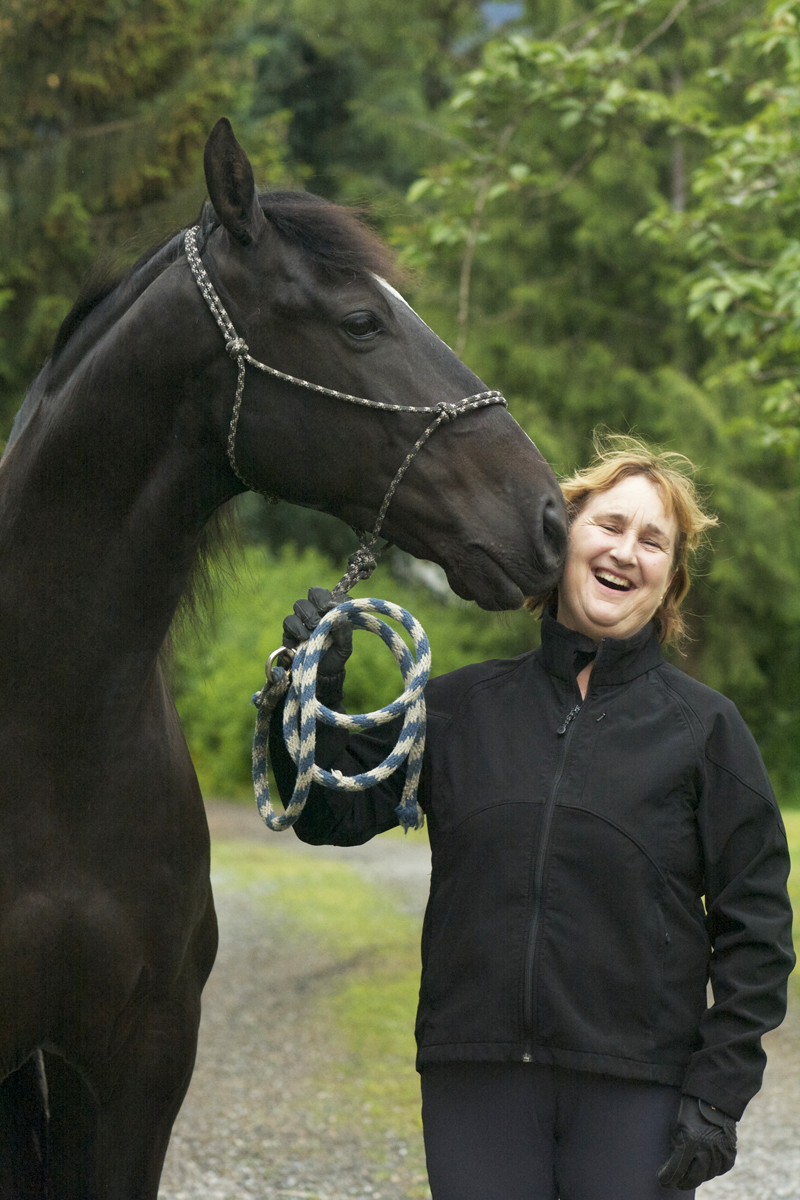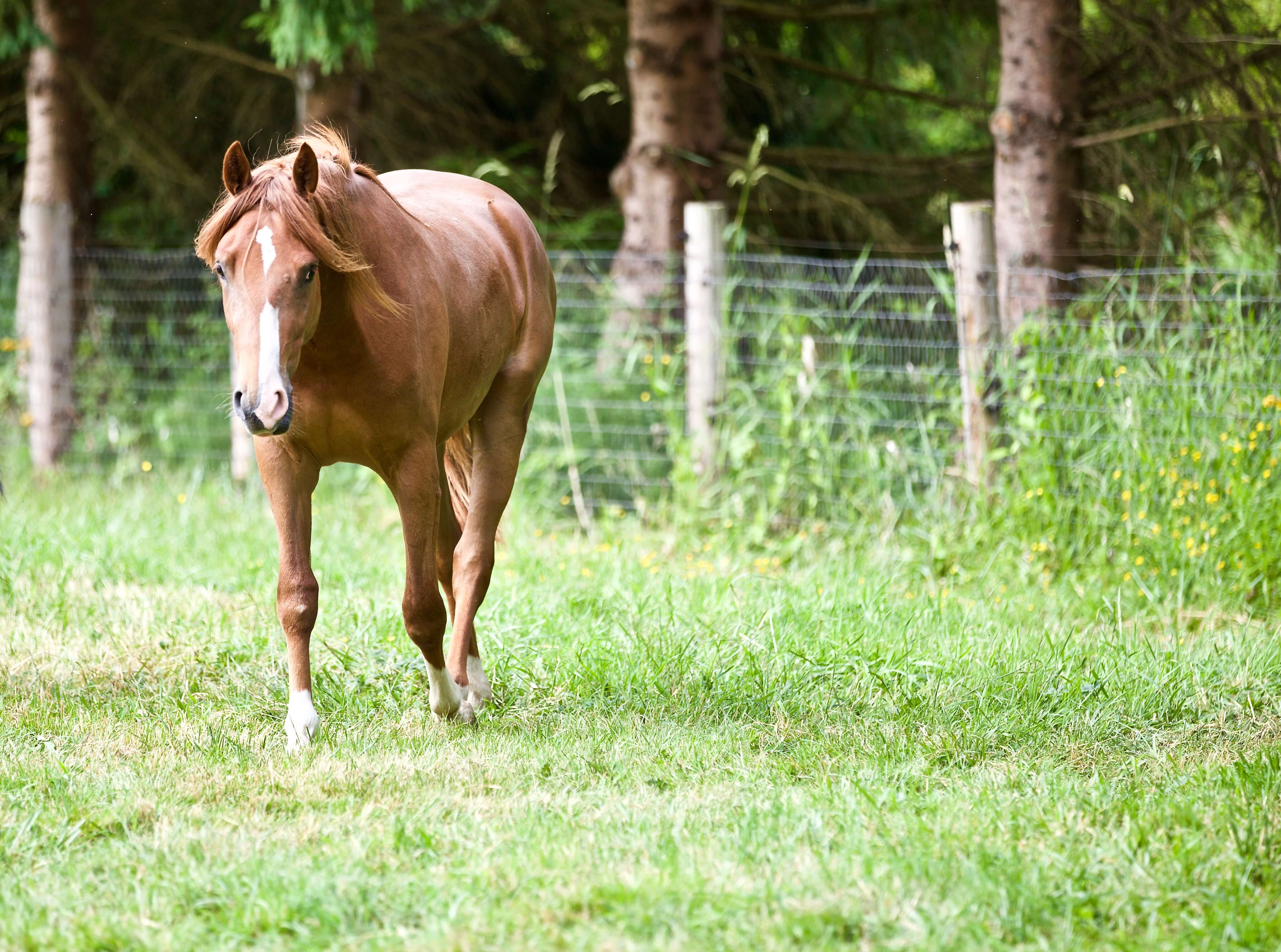Management is Top Priority
By Kim Roe
If you board your horse, you need assurance that he is well-cared for and safe. As you drive off and leave your best buddy in someone else’s care, it’s important to know he’s in the best of hands.
Top considerations when choosing boarding are management (of facility and boarders), horse care, and the facility itself.
Management

Drive into a well-designed, neat as a pin, and beautifully-kept boarding facility and you might breathe a sigh of relief. How a boarding facility is kept is certainly an indicator of how the horses are cared for — but not the most important one.
Look at the horses first. Are they healthy and shiny? Do they look content? Do they greet you with ears forward or do they pin their ears and turn their tails to you? Do the horses seem hungry? Is there plenty of good quality hay and green-grass around? Are the horses turned out or stuck in stalls? If it’s sunny and 70 degrees are the horses naked or sweating in blankets?
The barn manager should live onsite and have the experience to recognize a horse in distress in the early stages. She should have the experience to deal with a cast horse, catch a loose one, and know the difference between teff hay and Timothy, among a million other things. Taking care of a barn full of horses is a job that requires years of experience and plenty of knowledge.
Interview the manager and get references from other boarders. Stay away from facilities where no one lives, and the horses are left alone overnight.
People Herding
Keeping people and horses safe and happy means management has to be able to keep boarders in line. It’s a hard job, but when done well it means that boarders learn to have mutual respect and take care of one another. Clear rules and expectations for behavior need to be laid out.
As a boarder, you need to find a facility that fits you. If you’re a barrel racer, don’t board in a dressage barn. Find a place where your type of riding works with what others are doing. Do you like peace and quiet while you’re riding? Perhaps stay away from a barn filled with children.
Horse Care
Feed and Water
Hay should be of good quality. No moldy, dusty, or weedy hay — and more than one kind should be offered. Horses on grass should be monitored and fields should not be over-grazed, weedy or full of manure.
Horses in stalls or dry lots should be fed at least 3 times per day. Managers should be willing to fill slow feeders and hay nets, and horses shouldn’t be fed on sand or gravel.
Water troughs and buckets should be cleaned regularly and checked daily. Troughs that are green with algae are inadequate for horses to drink. Automatic waterers can be a wonderful thing as long as they’re clean and are the type that monitors the amount of water that a horse has consumed.
Turnout
Facilities should offer individual turnout, quarantine new horses, and keep haul-ins away from resident horses. If horses are turned out in groups, they should carefully integrate new horses. Turnout groups should be selected with care.
In the Pacific Northwest, all-weather (mud-free) turnout should be available so horses aren’t stuck inside in cold and wet weather or standing in ankle-deep mud or ice.
Staff
Steer away from facilities that use children, young teens, or unknowledgeable people to do the feeding, turn-in and turnout. Many cooks ruin the soup, and too many hands or constant turnover of staff in a boarding facility can result in confusion and dangerous mistakes. Stability in the staff creates relationships between boarders, horses, and management that helps maintain your horse’s health and safety.
Facilities

Finally, when looking for your boarding facility it’s important to look beyond expensive and fancy and be able to see safe and solid. Good ventilation is more important than warm and tight.
Stalls should be solid, made of well-maintained materials. Rubber mats should be flat, not curled up at the edges or working loose. Safe fencing is a must and a gravel parking area where you can safely unload is important if you haul out frequently. Pastures close to busy roads and facilities without a gate to stop a loose horse should be avoided. Arena footing should be of good consistency and watered and worked regularly.
When searching for a boarding facility, make a list of your priorities. Start by asking local veterinarians and farriers; they see it all and know which facilities have been safely and carefully taking care of horses for years. Finding your perfect barn home will make a huge difference in your horse’s life and your own.

Kim Roe grew up riding on the family ranch and competed in Western rail classes, trail horse, reining, working cow, and hunter/jumper. She trained her first horse for money at 12 years old, starting a pony for a neighbor.
Kim has been a professional dressage instructor in Washington state for over 30 years, training hundreds of horses and students through the levels. In recent years Kim has become involved in Working Equitation and is a small ‘r’ Working Equitation judge with WE United.
Kim is the editor of the Northwest Horse Source Magazine, and also a writer, photographer, and poet. She owns and manages Blue Gate Farm in Deming, Washington where she continues to be passionate about helping horses and riders in many disciplines.

